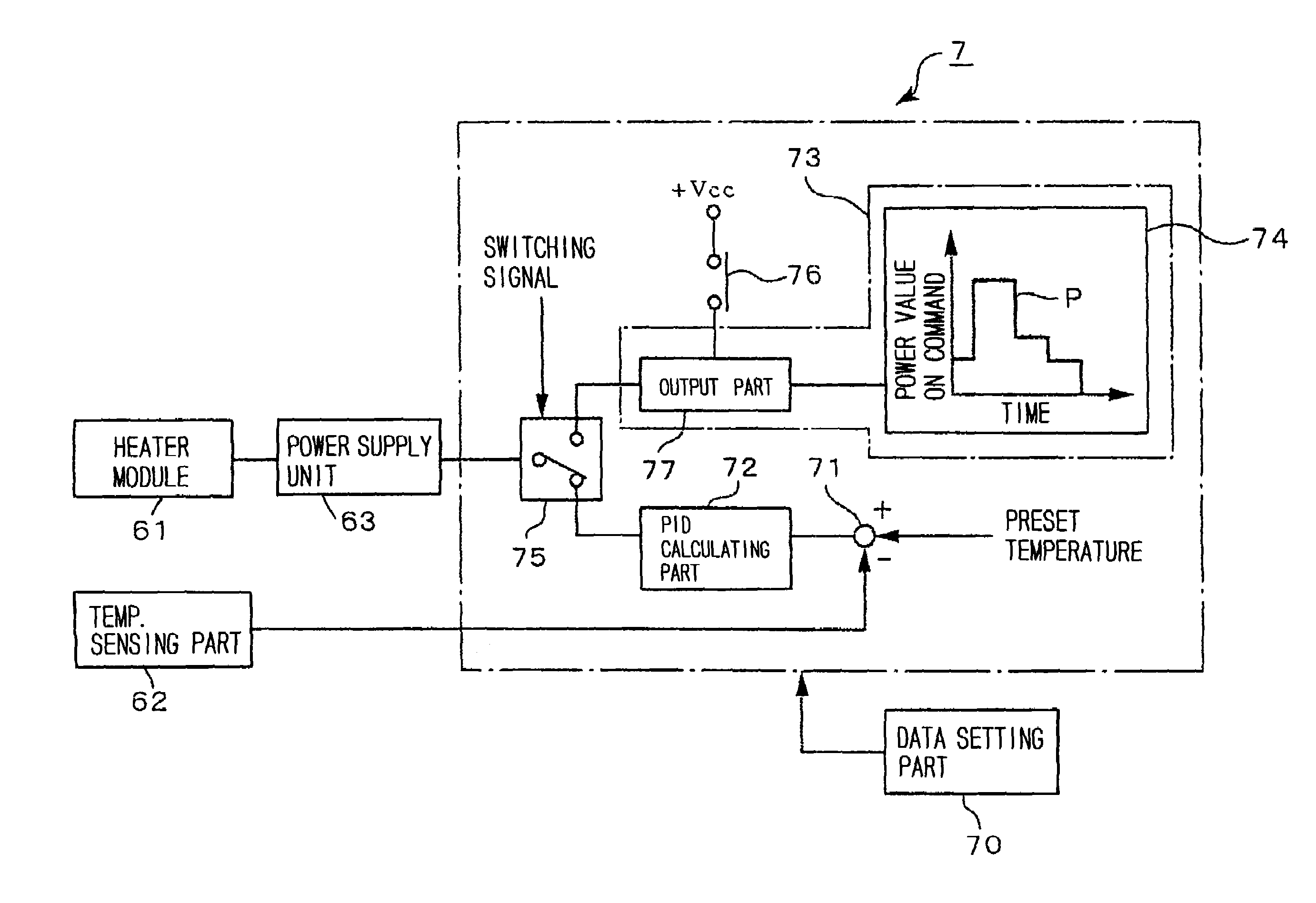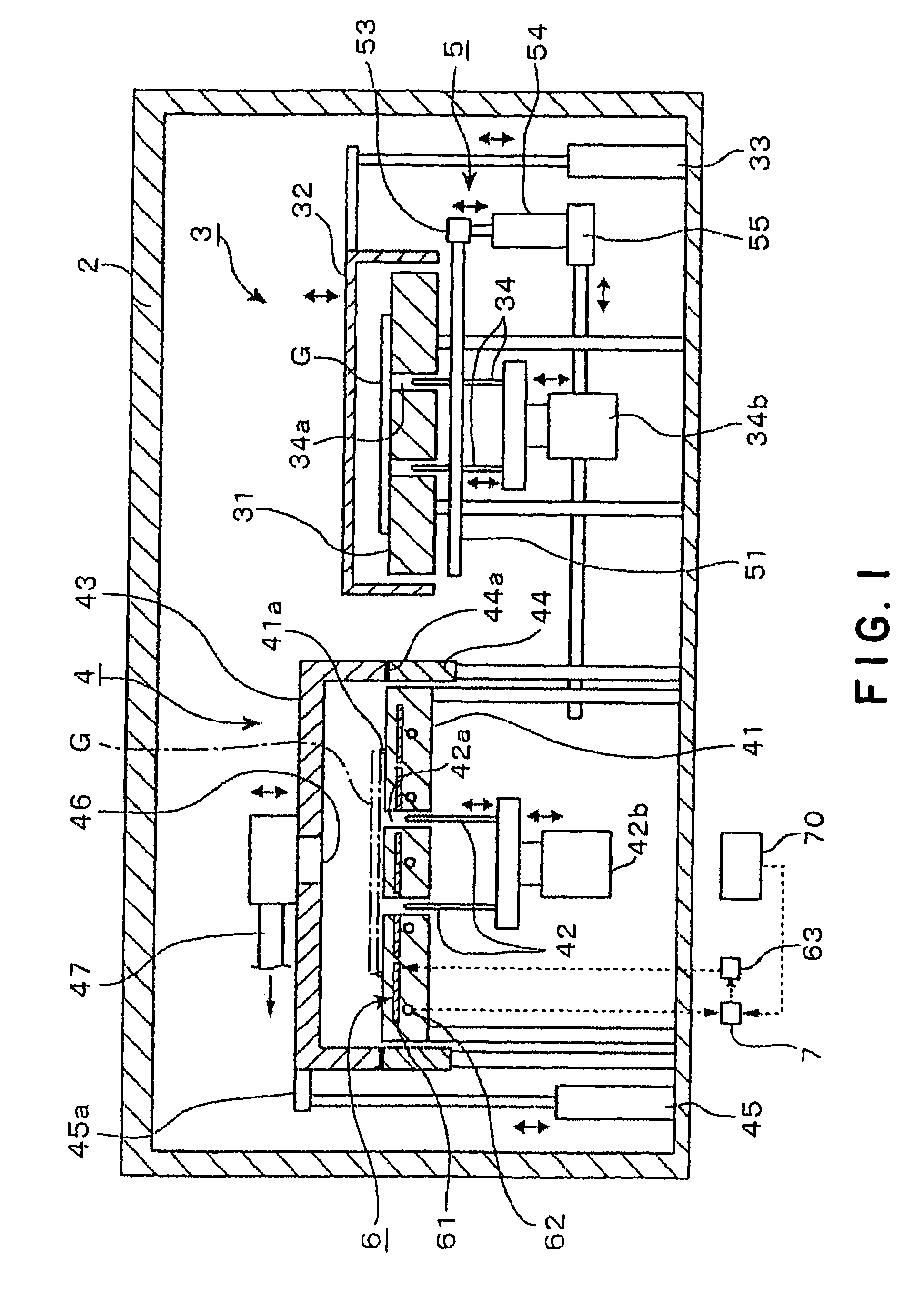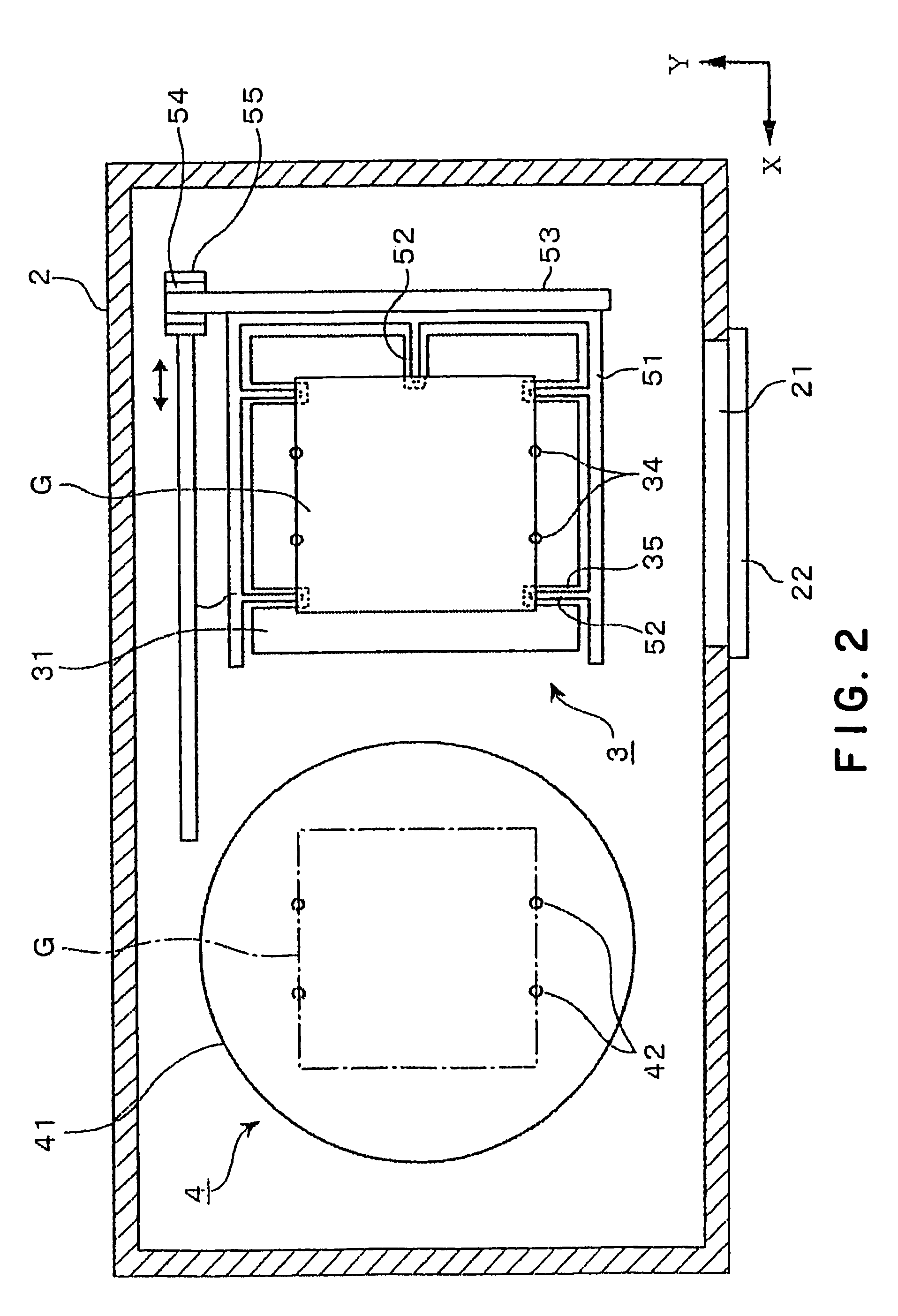Heat treating apparatus and heat treating method
a heat treatment apparatus and heat treatment technology, applied in the direction of manufacturing tools, process and machine control, instruments, etc., can solve the problems of in-plane temperature distribution of substrate g in heat-up period, large deviation in coating film thickness, and disadvantageous temperature of substrate g, etc., to achieve high accuracy, short time, and heat treatment
- Summary
- Abstract
- Description
- Claims
- Application Information
AI Technical Summary
Benefits of technology
Problems solved by technology
Method used
Image
Examples
Embodiment Construction
[0054]A heat treating unit forming a heat treating apparatus of an embodiment of the present invention will be described with reference to FIGS. 1 and 2. In the figures, reference numeral 2 designates a processing container forming an exterior body of the heat treating unit, in which a cooling section 3, a heating section 4 and exclusive transfer unit (i.e. transfer mechanism) 5 are arranged. The cooling section 3 is provided to apply a designated cooling process to a substrate G, such as mask substrate, while the heating section 4 is provided to apply a designated heating process to the substrate G. The transfer unit 5 is adapted so as to transfer the substrate G between the cooling section 3 and the heating section 4 exclusively.
[0055]The cooling section 3 includes a cooling plate 31 for mounting the substrate G in a predetermined mounting area and further cooling the substrate G. In the shown example, the cooling plate 31 is formed larger than the substrate G. By a not-shown cool...
PUM
| Property | Measurement | Unit |
|---|---|---|
| temperature | aaaaa | aaaaa |
| surface temperature | aaaaa | aaaaa |
| temperature | aaaaa | aaaaa |
Abstract
Description
Claims
Application Information
 Login to View More
Login to View More - R&D
- Intellectual Property
- Life Sciences
- Materials
- Tech Scout
- Unparalleled Data Quality
- Higher Quality Content
- 60% Fewer Hallucinations
Browse by: Latest US Patents, China's latest patents, Technical Efficacy Thesaurus, Application Domain, Technology Topic, Popular Technical Reports.
© 2025 PatSnap. All rights reserved.Legal|Privacy policy|Modern Slavery Act Transparency Statement|Sitemap|About US| Contact US: help@patsnap.com



